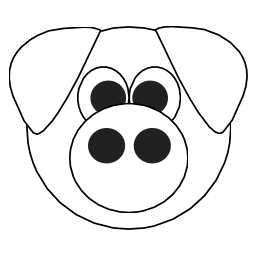Writers' Ways 5

The structure of a story.
What ever the story, be it fact or fiction, there will always be:What ever the story, be it fact or fiction, there will always be:
- A beginning.
- A middle.
- An end.
But there is something missing. Usually there will also be: - A title or headline.
For example:
4. Little Red Riding Hood
- Once upon a time..
- …What big eyes you have…
- …And they all lived happily ever after1
When one reads a story, it is obvious where to begin. Sadly, that is rarely true when writing one.
Writing with structure
A writer has so many questions to answer when starting a story. A key one might be which part to write first: the title, the beginning, the end, or the middle? The answer varies. Perhaps you might already have an idea for the ending of a story, or an article, or a piece of writing. This is a starting point from which to work backwards.
Whatever your starting point, consider using the Journalist’s 5 W dictum introduced in the last Writers’ Ways to help you. The key question to answer is: What is this story all about?
You may have already been thinking through a scenario of happenings which might be the ‘middle’ or main bulk of your writing. This would then beg the questions of: what triggered those events? And where will they lead?
On the other hand, a simple word or a phrase may play on your mind and lead to an eruption of ideas and events. That would be the beginning. Remember, you do not have to write a story in the same order that it is written.
Write the story in the order which suits you at the time. You can move the sections around later.
Knots of inspiration
Have you ever been reading a story and wanted to know how it ends, and have taken a quick look? Never? Really? Okay, you will be believed. But, I know someone who might query this, and who learned a lesson the hard way when his nose grew and grew and grew!

The idea for today’s creative painting came from a Knot of Wood that made me think of Pinocchio. The original character of Pinocchio was created by Carlo Collodi in 1883 in ’The adventures of Pinocchio’. It is an example of a fairy tale which has a ‘4;1;2;3’ format:
4. Title
1. Beginning
2. Middle
3. End.
But we do not know which part Carlo Collodi wrote first.
How do you spell Pinocchio?
The name gives rise to an interesting conversation:
‘How do you spell Pinocchio?’
‘One nose and two cheeks.’
‘Pardon?’
‘One nose and two cheeks!’
‘Why do you keep saying that?’
‘Because you asked me how to spell a word.’
‘Go on. I guess eventually you’ll get around to answering the question. I just want to remember that Pinocchio has one ‘n’ and two ‘c’s, not the other way round.’
‘Think of your own face. It has one nose and two cheeks. That’s what Pinocchio had too. One nose, albeit a rather unusual one, and two cheeks. Or, one “n” and two “c’”s.’
‘Ah! Thank you. Many lessons in one. Do they have a name these memory tricks?’
‘Surely do. It is a mnemonic. I know other ways of helping someone to remember. For example, necessary. Look at this word. One “c” and two “s”’s. Or, one coat and two shoes.’
‘One coat and two shoes. Right. Okay. Coat and shoes.’
‘Yep. You’d look a bit odd with two coats and one shoe. It is necessary to have one coat and two shoes, just as the word “necessary” has one letter “c”, and two “s”’s. Or, one coat and two shoes.’
‘I understand that one, do you know any other ones?’
‘Big Elephants Can Always Upset Small Elephants.’
‘I knew you were loopy!’
‘Remember the elephants and you’ll know how to spell the word ‘because’. Look at the initial letters: B - big, e - elephant..’
‘Ah, I see! C - can, a - always…’
For pondering
- If you have a word that has always given you a trouble with its spelling, can you ‘challenge’ it and make up a mnemonic to help you ‘get-over-it’? Perhaps you could use the method to help someone else who does have a problem because that little hurdle can be quite high when one just can not get over it!
- Thinking back to what has appeared on previous WWs, take a story you know well and look at it in a new light. What was the title? Did it draw you in, and did that title seem right for the story? Or would you have chosen something different? What about the opening sentence and page? Did you rush to move on or did you work hard to get into the story that unfolded? What about the end? Was that the right / best point for the end to happen? Were there too many loose ends?
A few thing there to mull over, happy pondering. And, until next time, keep writing.

Member discussion